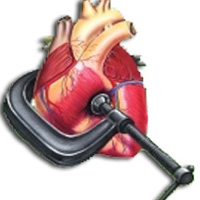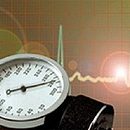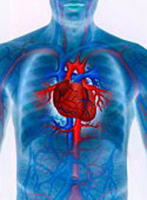The diagnosis of infectious endocarditis is based on identifying the causative agent of the infectious process. A lot of important role in determining the severity of pathological changes is played by EchoC. Treatment of valve endocarditis complex, consisting of medication and surgical methods.
Content
Diagnosis of infectious endocarditis
The diagnosis of the valve infectious endocarditis is based primarily on the early detection of the infection pathogen. To do this, a microbiological examination of blood (hemoculture) for sterility. This analysis is also needed to select the most effective antibiotic in this particular case. In addition to the microbiological blood test, its overall (clinical) analysis is performed. For valve infectious endocarditis, anemia (anemia) is characterized, which is associated with the peculiarities of the body's response to the infection, as well as an increase in the erythrocyte sedimentation rate (EE), an increase in the number of leukocytes, etc. Among other methods of diagnosing the valve infectious endocarditis, in addition to the examination of the patient, it should be noted auscultation (listening) of the heart for the identification of new or change in the sound of the previously existing sound noise. Any patient with suspicion of valve infectious endocarditis should be made echocardiography. This method, including when using a percussion-free ultrasonic sensor, allows in the overwhelming majority of cases to diagnose valve infectious endocarditis. In addition, echocardiography is also used to control the effectiveness of the treatment.
Treatment of the disease
 Treatment of valve info endocarditis is drug and surgical, and the use of one method does not exclude the use of another. Antibiotic therapy is carried out to all patients with valve infectious endocarditis. Before the appearance of antibiotics in patients with valve infectious endocarditis, there were practically no chance of survival. The ideal is the option when the causative agent of infection is installed using a blood microbiological research. Otherwise, the choice of antibiotic is carried out by selection. Most often used vancomycin, antibiotics of penicillin row, aminoglycosides. Antibiotics are prescribed intravenously, use drugs that destroy microbes, and not slowing them. Antibiotic treatment is carried out for a long time, an average of 1.5-2 months, until the infection is completely eliminated. Evidence of the elimination of infection is to improve the overall state of the patient, the disappearance of vegetation on ECOG data and obtaining repeatedly relevant microbiological confirmation.
Treatment of valve info endocarditis is drug and surgical, and the use of one method does not exclude the use of another. Antibiotic therapy is carried out to all patients with valve infectious endocarditis. Before the appearance of antibiotics in patients with valve infectious endocarditis, there were practically no chance of survival. The ideal is the option when the causative agent of infection is installed using a blood microbiological research. Otherwise, the choice of antibiotic is carried out by selection. Most often used vancomycin, antibiotics of penicillin row, aminoglycosides. Antibiotics are prescribed intravenously, use drugs that destroy microbes, and not slowing them. Antibiotic treatment is carried out for a long time, an average of 1.5-2 months, until the infection is completely eliminated. Evidence of the elimination of infection is to improve the overall state of the patient, the disappearance of vegetation on ECOG data and obtaining repeatedly relevant microbiological confirmation.
In cases where the valve infective endocarditis led to the formation of a non-drugized damage of a heart valve or manifestation of the disease, despite antibiotic therapy, may be a question of surgical treatment. An additional argument in favor of the operation is repeated embolism with a destructated heart valve flaw infection. The operation is sometimes performed at the time of the maximum activity of infection to save the life of the patient. Sometimes infection extends beyond the valve ring, forming umnuts (abscesses), which is also an indication for surgical treatment. During surgery, surgeons always try to keep their own patient valve. Sometimes limited to the removal of vegetation, embedding breaks of the flaps and T.D. In cases where the valve is almost completely destroyed by infection, it is replaced with artificial (prosthetized). As with operations over the vices of the heart valves, mechanical and biological prostheses use. In cases of active infection, biological prostheses are preferable, despite their relative shortgower, since the main thing is to cope with active infection. In cases of active IE, antibiotic therapy in the postoperative period is sometimes carried out as long as during drug treatment.









